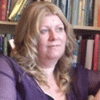How to turn CPD into great classroom practice

Far too many great training day ideas fizzle out in schools. So what turns the theory into day-to-day practice?

- by Nikki Gamble

Monday morning, the phone rings. It’s Jackie – headteacher at a three-form entry inner-city school.
“Two of my teachers attended a course on developing reading comprehension last term. They enjoyed the day and came back to school inspired and keen to put the new ideas into practice. We had a staff meeting so they could share what they’d learned and it’s being going well, but we’ve stalled. I have a knowledgeable and enthusiastic English lead, but he’s only been in post for a year. We need some support to guide us through the next step of the process.”
The request is a common one. “It’s good to hear that teachers have been enthused, Jackie. That’s a great starting point…’. We end the conversation with an arrangement for me to visit Jackie and her team in school to identify the best way of moving forward.
Understanding what needs to change
The efficacy of one-off training days is limited. A reading comprehension course that lasts a single day can have a considerable and lasting impact if clearly focused on specific aspects of teaching, but systemic and cultural change requires more sustained professional development opportunities.
My first meeting with Jackie is spent fact gathering with the intention of devising a clear purpose for the professional development. What does the school already do well? What are the areas for potential change, development and growth?
Outcomes for pupils are the focus of the discussion. We look at the data, but also consider children’s wider reading experiences and attitudes to reading. After an initial briefing, I spend the morning with the English lead, Stephen. We visit classes to see reading lessons, talk to pupils about their learning, look closely at the learning environment and the extent to which it supports children’s development as readers.
Inevitably, teachers’ level of subject knowledge and skills is varied. In some lessons the teaching of reading skills is underpinned by a clearly articulated understanding of what it means to be a good reader. In other classes it’s more performative; there’s a desire to do the ‘right thing’ but the understanding of why and how particular teaching approaches are used is less secure.
This is reflected in the way classrooms are set up. Some teachers have spent a lot of time putting together welcoming reading environments. There are impressive displays, complete with tree-like structures spanning out across the class. Others are lower key.
In fact, the best-used reading area is one that’s less visually impressive. Here the teacher has put up a temporary display featuring some of her favourite novels and there’s a waiting list of children wanting to read them. It’s not the tidiest area, but it’s not unkempt or uncared for either.
Hearing from the teachers
After the rounds I discuss this with Stephen. Initially, he’s most impressed by the giant tree and fairy lights and feels the more informal display doesn’t show enough effort. The benefits of fact finding, and the time afforded us to look around the school together is invaluable.
Things come to light that might not have been regarded as significant or relevant to the CPD focus identified by the school. Themes are starting to emerge.
In the afternoon, Jackie has arranged for us to meet teachers in year groups for half-hour discussions. The aim is to learn about the teachers’ perceptions of their pupils’ progress and to help them identify their own training needs. Even in a school that has a shared goal, teachers are individuals.
The process takes a day, but it’s time well spent. It becomes evident that this is a school with a supportive, constructive learning community that has a shared sense of purpose. Where this doesn’t already exist in a school, it’s important to structure professional development in a way that creates a shared vision.
After a short debrief with the senior management team outlining some key themes that have emerged from the day, there’s a quick staff meeting to provide initial feedback from the morning’s visits (and most importantly to thank teachers for sharing their time and practice).
Making a plan
Within the next week I write a report and a set of proposals for some planned development to take place over the next three terms, with a further option of a two-year development plan – subject to review at the end of the first year.
The way forward for Jackie’s school is a monthly programme of CPD. An initial training day is followed by a series of in-school support sessions and staff meetings. The programme is devised collaboratively and is jointly facilitated with Stephen, the English lead. The training involves development of both subject knowledge and subject-specific pedagogy.
Making links for teachers to what they know about generic pedagogy is important too. I observed excellent use of a Think Alouds strategy in maths lessons, but the same approach wasn’t employed for developing reading comprehension. I also identify some key reading to support the training and sign post other resources and research for those teachers who want to dig deeper.
We set up learning triads of teachers working across different year groups. Time is allocated for these smaller groups to collaborate – rather than the usual whole-school staff meeting – so they can discuss and record key insights, which they then bring back to the next twilight session.
Responding to feedback
Although the year is mapped out, we respond flexibly to teachers’ needs.
We have been looking at the quality of teacher-pupil dialogue and one teacher asks if she can observe a session to fully understand what we have been talking about.
We set up an observation – not, we explain, to exemplify ‘ideal teaching’, but to provide a reflective space where we can look at how the discourse progresses without the teacher feeling that she is under the spotlight.
Removing the threat of being observed works well and for the following meeting the teacher is happy to share some video of her own teaching for the benefit of the group learning experience.
At the end of the first year Jackie catches me in the corridor. “I’m delighted how far we’ve come together,” she says. “The secrets to success were here in school, we just needed help to see which bits we needed to work on and where attention was being misdirected. A whole-school focus has been great, and I think it’s brought us much closer together as a team.”
I agree, “Yes, but it’s also the time you have allowed for teachers to deepen their understanding and the shared common purpose that’s made such a big difference here.”
Does your training…
- start with an assessment of what outcomes should be for the children?
- look at what’s already being done in the school, and what works best?
- have a clear, ongoing structure?
- provide space and time for reflection and peer-to-peer support?
Nikki Gamble is CEO of Just Imagine, the centre for excellence in reading, and associate consultant at the Institute of Education.











